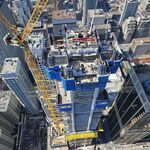crs1026
Superstar
The purpose of the recent test was to test the RDC's compatibility with CTC signalling systems that had been installed since the RDC's were discontinued in Southwestern Ontario. There is some of that on the Windsor line and some on the Stratford-Sarnia line. That may have led some to asssume that the RDC's are going to run both lines. That appears unlikely, there are only about 3 cars available. A Sarnia-London shuttle that connects with a Windsor train in London is possible, and a good application for RDC's. I'm a bit skeptical that VIA wants to put RDC's back on the St Mary's leg considering the snow drifting problems they always had through there.
In terms of train frequency, it would be hard for CN to argue that it can't accommodate the same frequency of service to Sarnia that existed only a few years ago. CN runs fewer (although longer) freight trains than when Sarnia saw 2 trains each way daily. The bigger issue is east of Kitchener, where the sidings are gone and there are now GO trains in increasing numbers.
I would take the media reports as accurate - but note that VIA is "requesting", nothing more. "No" may remain "no".
- Paul
In terms of train frequency, it would be hard for CN to argue that it can't accommodate the same frequency of service to Sarnia that existed only a few years ago. CN runs fewer (although longer) freight trains than when Sarnia saw 2 trains each way daily. The bigger issue is east of Kitchener, where the sidings are gone and there are now GO trains in increasing numbers.
I would take the media reports as accurate - but note that VIA is "requesting", nothing more. "No" may remain "no".
- Paul




